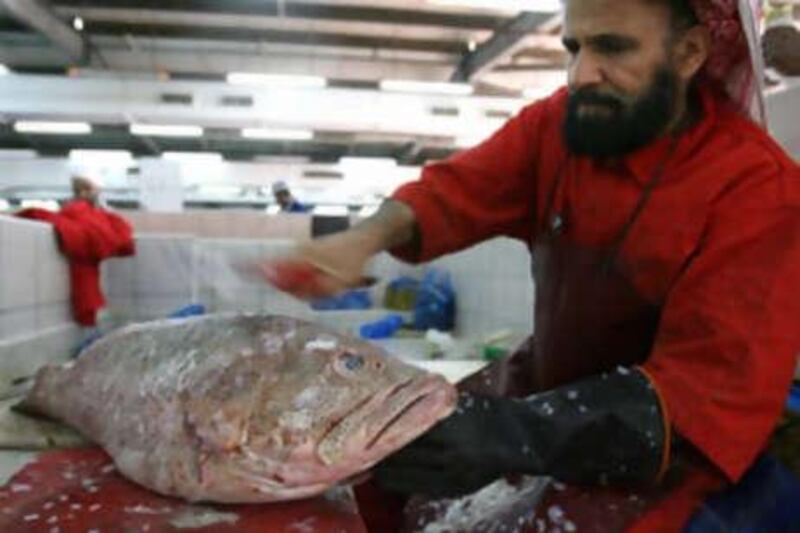Stocks of four of the most important commercial fish are recovering after reaching record lows in 2001 and 2002, but more measures are needed to protect them, a senior environmental official says. The fish - hammour, sha'ary, farsh and zuraydi - are still being fished well above their sustainable limits, according to Dr Thabit Zahran al Abdessalaam, the director of marine biodiversity management at the Environment Agency Abu Dhabi (EAD).
Most of the fish, as much as 71 per cent, whose habitats are close to the ocean floor - including the hammour, which hide among rocks and crevices in coral reefs - are overfished, as are nearly half of the fish that do not stay in one part of the water. Scientists have several ways of assessing whether a fish stock is being depleted, including analysing the age, length and gender of fish at markets. If a large number of the fish have not reached maturity, it can mean they are being caught too young and are not being given an opportunity to reproduce.
Part of the problem is new regulations for boats and fishing equipment introduced by Abu Dhabi in 2003 that were only adopted by fishing vessels operating out of the capital's ports, said Dr Abdessalaam. "Boats from other emirates are coming to fish here," he said. "While we cannot stop them, they are expected to abide by the regulations of the emirate." He said the Government was expected to start using radar and satellite equipment to identify boats from other emirates in its waters and ensure they are complying with its regulations. But, he added, compliance by Abu Dhabi fishing boats could also be improved. "It is not 100 per cent, we could do better," he said, urging greater co-operation between the capital's environmental body and the Coast Guard and Marine Police.
In 2003, a study revealed that fish stocks had declined dramatically over the past two decades. "Only 19 per cent of the stock biomass present in 1978 remained in 2002," said Dr Abdessalaam. In response, the EAD ordered the design of metal traps known as gargour to be changed to allow young fish to escape. This, said Dr Abdessalaam, ensured that fish were given a chance to breed before being caught.
The study also showed up to 60 per cent of fish being caught in gargour were dying unnecessarily because many traps were lost at sea. The new gargour are fitted with an escape panel that allows fish to eventually get away. In addition, only traditional dhows are allowed to use gargour and each boat can only carry 100 of the traps. Data from the 2003 study also raised questions about whether the stocks could replenish themselves. To determine if a species is sustainable, scientists use a measure called spawning stock biomass, which refers to the total weight of fish in a stock that is old enough to reproduce. For a fish stock to be sustainable, a minimum of 20 per cent of the fish must be of reproductive age. For the hammour, also known as the orange-spotted grouper, the figure was only 1.9 per cent. For the farsh, also known as sweetlips, it was 10 per cent, while for the sha'ary, also known as the emperor fish, it was 11 per cent.
However, data from 2005-2006 showed that while the spawning stock biomass for farsh increased only one per cent, it doubled to 22 per cent for the sha'ary. The indicator also almost doubled for hammour, reaching three per cent. By 2006, the mean size of first capture for the three species also grew by more than 10cm compared to 2001 levels. Nevertheless, the EAD said fish were still being caught before they reached maturity and that the hammour was the worst affected.





